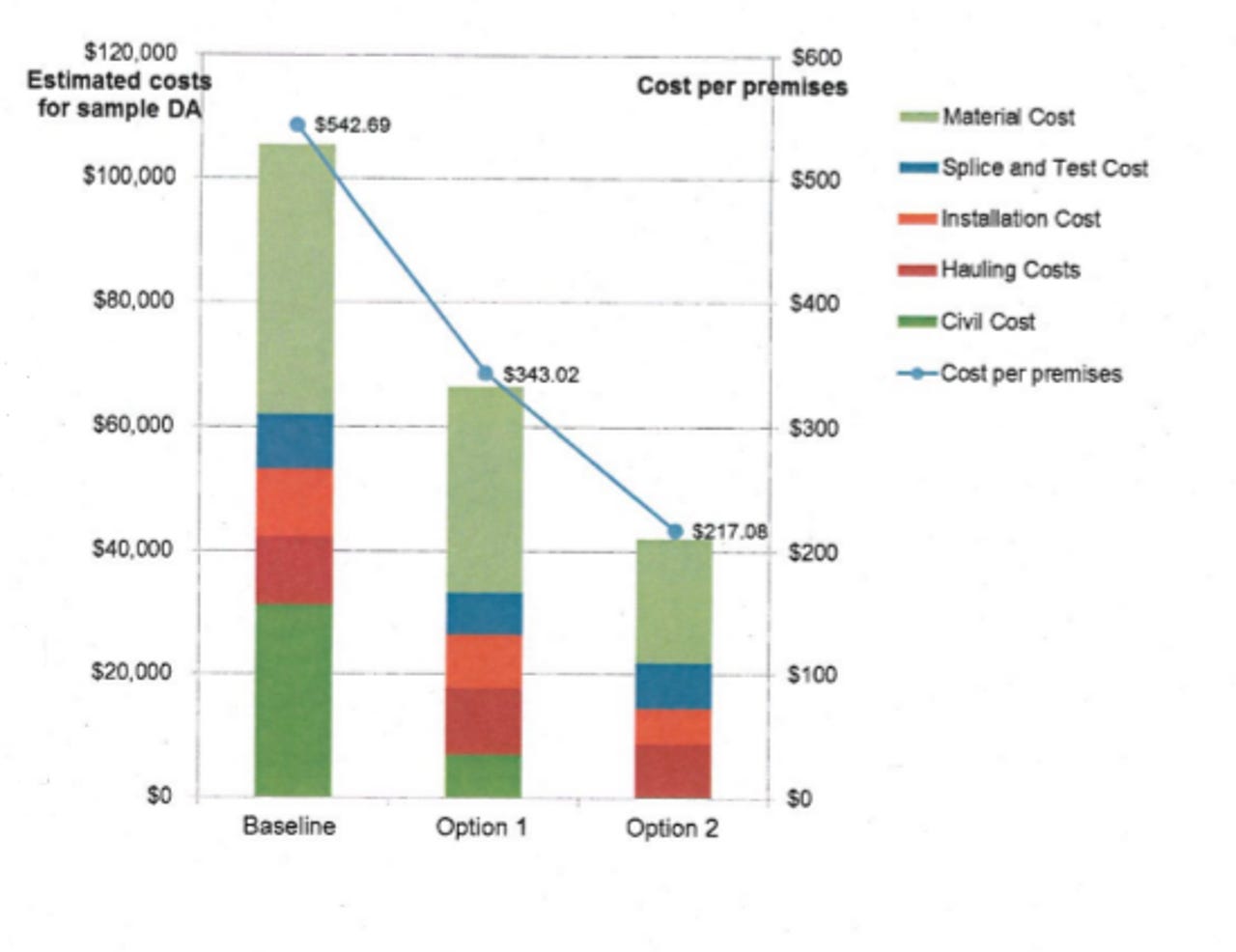Another NBN leak shows cheaper no-cabinet FttP trial in Victoria

The company responsible for deploying the National Broadband Network (NBN) across Australia has been looking to reduce the cost of its fibre deployment by looking at smaller kit, a new leak document says.
Dated July 8, 2015, the document entitled "CTO Briefing: Multi Technology - Local Fibre Network" is marked commercial in confidence and for internal use. It discusses how the company is looking to reduce the capital cost of the local fibre network segment of the NBN, which runs between its distribution network and the lead-ins to premises.
By switching to its multi-technology local fibre network (MT-LFN) the NBN company is able to do away with fibre distribution hubs, which removes the need for large pits and street cabinets, makes use of smaller multi-ports and cables with fewer fibre ribbons, as well as having local joints and access joints replaced by a smaller flexibility joint.

The document states that MT-LFN would allow for a "consistent and flexible upgrade path" for fibre to the distribution point or fibre to the premise.
A trial of the new MT-LFN was set to be conducted between July and December last year, the document claims, in low-density areas in Ballarat and Karingal in Victoria.
It has claimed that the use cases for MT-LFN would be greenfield single and multi-dwelling premises, as well as use in any FttDP rollout. The document states that the LFN portion of per premise construction cost is halved from around AU$1,200 to AU$600.
Shadow Minister for Communications Jason Clare said the document shows the NBN is in chaos.
"It shows that Malcolm Turnbull has been lying about how much it costs to connect to Labor's superior fibre NBN," he said. "It proves the only reason that Malcolm Turnbull is not connecting millions more Australians to the real NBN is politics."
"Good people from inside NBN Co are frustrated that they are being forced to construct a second rate network and consequently leaks are coming thick and fast."
For its part, an NBN spokesperson said it was natural that the company would be looking at ways to reduce FttP construction cost and time.
"This would be expected of any company, especially one spending taxpayers' money," the spokesperson said. "It's also worth remembering the backbone of the whole network is fibre, regardless of access technology."
"Connecting fibre direct to the home will always be the most expensive, but more importantly, the most time-consuming access technology."
Latest Australian news
The latest leak comes on the heels of another leak earlier this week that claimed NBN's FttN rollout was delayed and over budget.
"Construction completions currently sits at 29K against the corporate budget of 94K. Gap to target has increased from 49,183 to 65,268 as of week ending 12 Feb. Construction completions gap can be attributed to three main issues: Power, supply, and completions under review," the document said.
"Despite 'designed commenced' remaining above budget, all other significant milestones of FttN continue to remain behind target."
NBN denied the veracity of the documents leaked on Monday, something it did not do today.
"NBN reject claims that the company is at risk of not meeting its targets; NBN has met or exceeded every key target for six quarters in a row," an NBN spokesperson said.
Greens communications spokesperson Scott Ludlam said on Monday that if the leaked report was accurate, former Communications Minster cum Prime Minister Malcolm Turnbull should admit his multi-technology mix NBN model is a failed trial, and should return the rollout to full FttP.
During its financial results presentation at the beginning of February, NBN reported that the number of active premises had grown by 450,000 over the first six months of FY16, from 322,291 to 736,052, while premises ready for service grew from 826,824 to 1,670,972.
It also reported a net loss of AU$1.24 billion on revenue of AU$164 million. The loss was a 37.4 percent increase over last year's AU$902 million loss, with revenue growing by 152.3 percent from the AU$65 million reported during the same period last year.